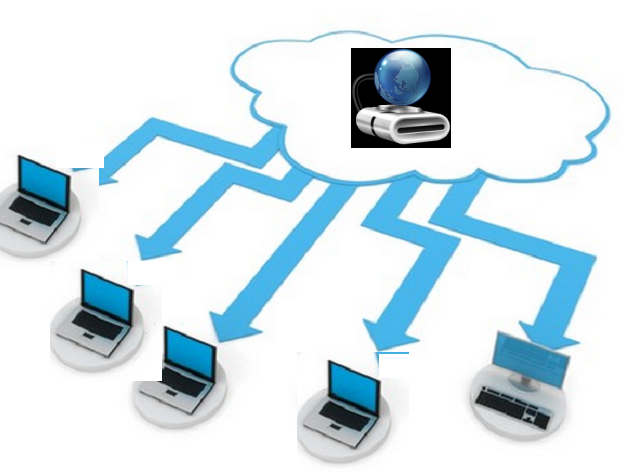
A network drive is a storage device on a server that multiple devices can access. It is a shared folder, which you can access from your File Explorer like other hard drives on your computer. To map an external drive to a network, you must create a shortcut to the shared folder to access available resources. This shortcut creation procedure is named mapping a network drive. Once you create a shortcut, it will show up under This PC.
How to Map a Network Drive on Windows 10?
There are different methods to Map Network Drive on Windows 10. Below, we have listed 2 quick ways to map network drive on Windows 10. You can use the Map Network Drive wizard or command prompt to map a network drive.
Method #1: Using Map Network Drive wizard
- In Windows 10 computer, click on File Explorer and select This PC.
- Click on the Computer tab and press Map Network Drive.
- Select Map Network Drive from the context menu.
- In the Map Network Drive wizard, specify the drive letter for your network folder.
- Then, click the Browse button to select the folder you want to map and press OK.
- After selecting the folder, click on the Finish button.
You can select Reconnect at the sign-in check box to reconnect the folder when you sign in. To connect to this network location using different credentials, select Connect using different credentials check box, and when asked, enter the necessary permits. Now go to This PC, and you can see the drive under Network Location. If you want to disconnect it, right-click on that and select the Disconnect option.
NOTE: when doing these steps, the drive connecting as a network drive will act as an external hard drive. Anyhow, keep a complete backup of the data on both drives. As there are chances of losing partitions on
Method #2: Using Command Prompt
- Open Command Prompt and type the mentioned command to map a network drive that is not password-protected
net use z: \\networkShare\files
- To create a password-protected network drive, type the command in Command Prompt.
net use z: \\networkShare\files /user:userName PaZZw0rd
Specify the required username and password. These two commands will map a network drive. But, after restarting the computer, they will be removed.
- If you want to map a network drive that is connected even after restarting, then type the following command-
net use z: \\networkShare\files /P:yes
Here, we have shown you quick ways to map network drive on Windows 10. In other Windows OS, a similar procedure should be carried out. However, the procedure to access the Map Network Drive wizard may vary.
Make sure you follow these steps carefully and that the commands used are correct. Any small mistake can make your internal drive and external drive (network drive) inaccessible. Losing data from this network drive may halt not only your work but even others who are using the shared network drive. To prevent data loss, you can also enable the Recycle Bin on your mapped network drive. Remo Hard Drive Recovery software to recover lost partitions from your external drive shared on a network and your internal drive in a few steps. However, why take such a risk? You can avoid such issues by taking regular backups. Also, ensure you have an updated backup copy before performing significant actions like mapping the external drive to the network, formatting, etc.
Note: If you are a Windows Server user and accidentally deleted or lost your essential data. Follow the solutions in this article to discover how to recover deleted files from Windows Server.